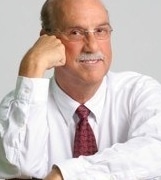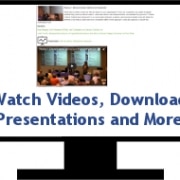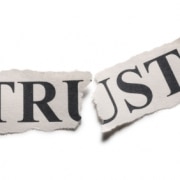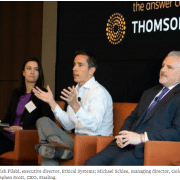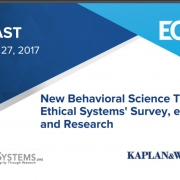Wall Street and the Behavioral Science of Making Culture Ethical

Before he became “The Wolf of Wall Street,” Jordan Belfort, when he arrived in New York in the 1980s, was more like a starry-eyed sheep. That’s how Leonardo DiCaprio plays him in The Wolf of Wall Street, the film adapted from Belfort’s 2007 memoir of his years as a stockbroker. In an early scene from the film, Belfort brims with a rookie’s optimism about starting at investment banking firm L.F. Rothschild, under stockbroker Mark Hanna, played by Matthew McConaughey. He can’t wait to help make Hanna’s impressive clients more money, but he learns that isn’t quite Hanna’s modus operandi. “F[—] the clients,” Hanna tells Belfort. “Your only responsibility is to put meat on the table.”
To say this sort of nihilistic, self-serving attitude illustrated a cultural problem in the financial industry would be putting it lightly. It was more akin to a cancer, one that Henry Engler—a Thomson Reuters editor and writer who focuses on global financial regulation—was stunned to see metastasize in the short time after the October 1987 stock market crash. “What followed was a series of events that led to one of the biggest scandals in the industry’s history,” Engler writes in his new book, Remaking Culture on Wall Street: A Behavioral Science Approach for Building Trust from the Bottom Up. A couple months later, one of Wall Street’s most powerful speculators—a man Engler almost dropped out of NYU to work for—was jailed for several years for conspiring to file false stock trading records: Ivan Boesky. “The charges exposed what had been a secret web of traders, with Boesky at the helm, dealing off of proprietary information and reaping enormous amounts of profits,” Engler writes.
The scandal affected Engler in two ways, the first being that his rose-colored view of the industry was shattered. “It demonstrated that what at first glance might appear to be superior knowledge and expertise was actually fraud, fueled by excessive greed and a willingness to break the law.” The second had him reflecting on why he turned down the job offer with Boesky. What he didn’t know then was that he could understand his decision to stay in school under the rubric of “loss aversion,” the idea that losses are anticipated to hurt more than gains are to feel good. Engler has since realized that misbehavior in the financial industry can be understood scientifically—and that behavioral science, particularly after the 2008 financial crisis, can reveal a better cultural path forward. “What behavioral science tries to do,” he writes, “is understand what motivates individuals to make decisions, even if at times when those decisions don’t seem to be in their best interest.”
The biggest challenges are around engaging your employees in a way that they believe they have an important role to play.
As the editor of regulatory intelligence at Thomson Reuters, Engler writes on a range of issues, including conduct, cultural and ethical issues, as well as the potential impact of events such as Brexit. He also covers regulatory developments in the derivatives markets and other major capital markets. What’s more, he’s organized forums for Thomson Reuters clients on issues such as cultural reform and how banks and regulators are coping with misconduct and ethical issues among their employees.
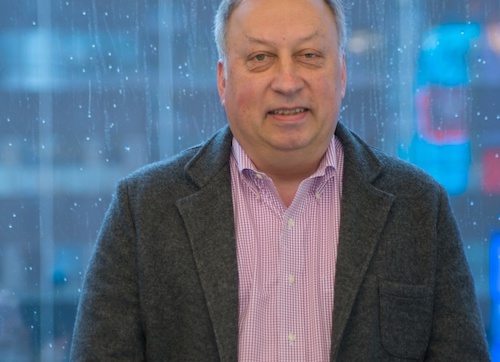
Ethical Systems recently caught up with Engler to hear how he sees the way behavioral science can help organizations, particularly in the financial sector, assess and reform their cultures to make them more ethical.
Your most recent book, Remaking Culture on Wall Street, came out a few months ago. Why do you place so much importance on trust?
Trust is a critical factor in the cultural makeup of any institution, whether inside or outside the financial sector. The financial crisis exposed what for many was a sharp decline in trust in many respects: between firms and their customers; between employees and their managers, as well as between regulators and the organizations they oversee. Re-establishing trust, particularly at the organizational level, is essential in repairing the damage that we witnessed during and after the 2008 crisis. It’s an issue the industry is still struggling with.
How does trust interact with increased surveillance?
Ideally, you want to have an internal culture that doesn’t require employee surveillance. But in today’s environment, surveillance is widespread, particularly in financial services. You have to ask: Why is that? This goes back to trust and the diminution of trust between management and their employees. If you can’t trust your employees to carry out their tasks in an ethical fashion, then the response is to monitor them. But as with the development of “reg-tech” tools, surveillance is an outcome or symptom of a culture that lacks trust; it’s an indication of an environment where there is lack of a shared purpose. From an ethical standpoint—and I’m not an ethicist—I think many employees in financial firms understand that they are being monitored. This has become part of the bargain with their employers. For individuals who don’t wish to work in such an environment, I suppose one can argue they can seek employment elsewhere. Unfortunately, given all of the scandals and problems we have witnessed within the industry over the past ten or more years, surveillance is now part of the landscape. It is very unfortunate, but again points to the lack of trust.
What is “reg-tech,” or regulatory technology, and how do you think it will shape the way companies seek to better their cultures?
I see these new and emerging technologies as a powerful tool that companies can use to help identify areas of their organizations where there might be hidden risks. For example, such tools could be used in identifying individuals who for one reason or another have great influence, both among their direct reports and also upward in the management hierarchy. Sometimes such “influencers” are influential for the wrong reasons, engaging in behavior with clients, or also internally, that masks activities that could put the firm at risk. So, I see technology providing management with another tool to help find those blind spots before they become magnified. But cultural reform cannot be achieved simply by employing innovative technologies. It’s a tool to help you mitigate risk and then hopefully you can take steps to prevent those risks from re-emerging. But the latter is the hard work of personally engaging employees.
What do you make of the possibility that banks may soon be required to have a “digital ethics” officer to ensure the integrity of business processes as they adopt “reg-tech”?
This is a very new and important development to the extent that technology continues to replace individuals in the business activities of banks. There is little reason to expect that banks will slow down their application of technologies where they believe they can achieve cost-savings and also provide the same, if not better, services than before. But if the “machine” is now making decisions, how it makes those decisions becomes critical. After all, algorithms are designed by individuals, and it becomes imperative for those running a business to understand what is going into those algorithms, even though they may not have all of the technical knowledge to develop them. This is where there is scope for a so-called “digital ethics” officer, someone who has the technical knowledge that can sit alongside both the tech and business people to ensure that what the “machine” is doing is what we want it to do rather than putting the organization at risk. It’s early days, but I can see this trend accelerating as banks continue to apply technology across many of their businesses.
How are banks using the tools of behavioral science to combat misconduct and better understand the internal workings of their cultures?
There are some banks, particularly in Europe, who have created behavioral-risk teams to supplement their compliance and risk-management functions. These teams are comprised of individuals trained in organizational psychology, for example, and who are tasked with identifying possible “blind spots” within their organizations in terms of employee behavior. The objective of these units is to apply some of the tools of behavioral science in mitigating employee risk—in other words, identifying areas of the institution and individuals that pose a risk, and trying to manage those risks before they escalate.
What’s an example of how behavioral science can help address the risks employees can pose?
From conversations I’ve had with behavioral risk teams at some European banks, part of their remit is to embed themselves among business units where there is a perceived risk or problem. For example, they are able to attend meetings, interview members of the business unit, conduct surveys and hold focus groups in order to better understand how these units function. In the course of such “deep-dive” assessments, members of the behavioral-risk teams are able to identify patterns of behavior among the staff or the managers leading a business that may warrant some form of intervention. An example might be weekly staff meetings where there is clearly an atmosphere where the managers are not challenged by the staff on any issue. The staff appears to be following the directions by managers irrespective of whether they believe they are conducting business in a proper fashion. Behavioral-risk team members may be able to pick up on such reticence by the staff by sitting in on business-unit meetings and then follow up individually with staff members to determine whether their perceptions are correct. If so, then the behavioral-risk team will incorporate their observations and findings in an overall assessment of the business unit and make recommendations to the business heads—both those managing the unit and those above—that should be incorporated. In this example, the recommendation would be to develop a “climate” where employees are encouraged to speak up and question management decisions if they have concerns.
What are the biggest blind spots large banks have in their conduct and cultural reform programs?
While nearly every large organization now has the so-called correct “tone from the top,” the hard work of cultural reform is really within the rank and file staff, particularly among middle managers, who are tasked with often high-performance objectives. It’s an area where, while on the surface a business unit might seem successful—say, when measured in its contribution to the bottom line—how it has achieved those results may be harder to understand. For example, does a successful part of the organization treat its customers fairly? Or, is it engaging in business practices that are deceptive or fraudulent? Also important is the environment or “climate” that exists within a business unit. Do the managers allow for dissenting opinions on how they deal with their clients or each other? Can managers be challenged by employees? If not, then employees may be reluctant to speak up when they see behavior that might pose a risk to the firm. One often has to understand why successful units within a large organization are able to achieve their success. This is an area where often more senior people simply accept the end results at face value. We have seen—and unfortunately continue to see—examples of individuals who are successful and influential within their organizations achieve those outcomes by means that have proven detrimental to the firm.
The U.S. financial system has so far failed to improve data quality and standards that regulators use—is that a culture problem?
I don’t see that as necessarily a “culture” problem, but rather more of a “collective action” problem, where it is difficult to organize both firms and regulators around agreeing on common data standards, and thereby improve quality. In rallying the industry around such a goal, you will often find those who are willing to put in the hard work and others who, as economists like to say, go along for a “free ride.” The U.S. financial system is a complex and fragmented regulatory system, which makes agreement among regulators more difficult. So, it’s less about culture, and more about structure, incentives, and organization.
When it comes to reforming culture, why might boards and senior executives be too eager for results from changes or policies aimed at addressing perceived problems?
The short answer would be that they lack an appreciation of just how hard it is to turn a company’s culture around. Culture is not something you can reform overnight, especially if in the past there was a certain way of doing things that was widespread, condoned by both senior and middle management, and where many of those who engaged in the old way are still around. I’ve had senior U.S. regulators tell me that cultural reform could be a generational issue, something that can only truly change over time as an organization’s people change.
No doubt generational change is important. Does that mean companies should introduce new hires to their culture’s values and norms in a concerted fashion?
Absolutely. In fact, there have been suggestions in the industry that firms should incorporate ways of gauging a prospective employee’s ethics and judgment in the interview process. This would be an attempt to determine how employees might behave or react in situations where there are clear ethical or behavioral choices. Certainly, once onboard, new hires should be made to understand the importance that the company places on its values and culture, and that this will be considered in the overall review process for employees. There are actually some large companies who are including an ethics assessment of employees which will determine whether they receive annual bonuses. The Swiss pharmaceutical company Novartis, for example, announced last year that is was incorporating an ethics evaluation in their employee review process.
What’s the right way to think about the problems certain subcultures in a company can cause?
This is problem that exists primarily within large, complex organizations, where you have multiple businesses operating around the globe and which, over time, develop their own language, ways of operating, and in the worst case become divorced from the cultural and ethical principles of the firm. It is hard for management at the top of such organizations to have clear insight into businesses that develop their own “sub-cultures,” and the effort required can be considerable. But another factor is simply the diverse nature of the multiple businesses that sit inside these complex institutions. The language and skills needed to be competitive in foreign exchange trading, for example, is quite different from those required in private banking. They attract different individuals and often require different skill sets. Also, the pace of their businesses are different—some, such as trading, are fast-paced, requiring employees to balance many risks and make decisions quickly. Others operate under longer-lead times, are more client focused—or simply require more direct contact with clients—which requires employees who have a longer-term focus. This diversity can lead to sub-cultures that can put the organization at risk, but they don’t necessarily have to.
What is most interesting to you about the problems and challenges companies face in learning about their own culture, and improving it?
There are many, but I find that the biggest challenges are around engaging your employees in a way that they believe they have an important role to play, and that there is a shared purposed across the organization. Very much related to this—and I think this is particularly true in financial services—is the idea of having a career and believing that your management is truly interested in your long-run well-being within the organization. Unfortunately, over time, many employees realize that they can work hard, keep their nose clean, and still find their jobs at risk due to circumstances beyond their control. The notion of having a long career on Wall Street is simply not what it once was. This, of course, is due to many changes, not least the way business has changed at large companies. The short-term nature of the business has led to decisions that impact employees to a much greater extent than before, and this has led to a degree of cynicism and self-interest, or self-preservation. In other words, employees have less loyalty to firms. How do you change this? I’m not sure, short of the management of these organizations looking at their business models and striving to re-instill longer-term objectives and goals for their organizations. On the optimistic side, there are increasing pressures for management to look beyond shareholder value as their sole business objective. This is a dialogue that is growing and how it plays into the management of financial service firm will be interesting to watch.
You’ll be speaking on a panel at our conference, “Ethics by Design: Managing organizations in an era of anxiety, polarization, and disruption.” What role do you think gatherings like these play in shaping cultural change in organizations?
I think these types of forums allow for an exchange of ideas on these very difficult issues and enable participants to hear and learn about what leading researchers in the field have found. In addition, by including organizations that are tackling these issues internally, participants have a way of perhaps linking theory to practice. This provides them with insights and information that they might wish to incorporate in their own organizations. Since these are complex issues, where there is often no toolkit or ready-made solution, having a chance to listen, discuss and exchange ideas is critical in furthering progress for both academics and industry practitioners.
What drove you to write a book on what Wall Street could learn from behavioral science?
I think the primary motivation was from seeing the frustration among many banks in tackling behavior and culture issues, and then finding a small group of banks and supervisors—primarily in Europe—who are trying a different approach—using tools from behavioral science to supplement their existing efforts. I believe there could be a lot of—to use the Wall Street term—return on the investment for banks who develop such tools and create teams to apply them in practice.
Brian Gallagher is Ethical Systems’ Communications Director. Follow him on Twitter @bsgallagher.


